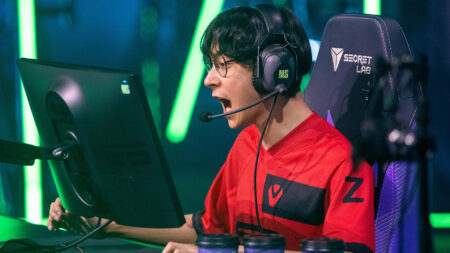Valorant is all about being tactical. Playing as a team will always improve your chances of winning, but to play as a functional team, you will need to understand all the Valorant terms players use today.
If you’re totally new to playing Valorant, here is a guide to some of the easiest yet most important Valorant terms, terminology, calls, and comms you need to know in order to communicate effectively with your teammates.
What are Valorant terms?
Valorant terms or terminology include different types of acronyms and slang players have grown accustomed to using.
These Valorant terms come with their own unique descriptions which speed up how players pass on information while they play the game.
This list of Valorant terms, terminology, calls, and comms will be updated over time. The game is constantly evolving as new Valorant terms are introduced by Riot Games and the community, alongside each new agent and map release.
Valorant game terminology
| VALORANT TERMINOLOGY | DESCRIPTION |
| Ace | When one player gets five or six kills in a single round. |
| Team Ace | When each player from the winning team scores a kill against the opposing team. |
| Flawless | A round where no one from the winning team died. |
| Clutch | The last player alive wins the round for his team. |
| Thrifty | The winning team spends about 2,500 fewer credits than their opponents. |
| Buy | The act of purchasing what you need before the start of a round. |
| Drop | Buying a weapon for a teammate from the buy menu. |
| Orbs | Spherical objects that players obtain on the map which charges up their Ultimate ability. |
| Shields | These increase the total health of a player and are identical to body armor in other shooter games. |
| Spike | Valorant’s central object which players need to plant or defuse in order to win the round. |
Valorant terms: Map location calls
| VALORANT TERMINOLOGY | DESCRIPTION |
| Back site | A location inside the spike site that is closest to the Defender Spawn. |
| Heaven | A high-ground spot that gives a high vantage point. |
| Hell | Directly located under Heaven. |
| Main | A neutral portion of the map in between a spike site and attacker spawn. |
| Long | A long walkway or passage found in between the attacker’s and defender’s spawns. |
| Short | A short walkway or passage found in between the attacker’s and defender’s spawns. |
| Cubby | A small section or deep corner where players can hide. |
| Link | A short walkway that serves as a connector between two spike sites. |
| Mid | The middle portion of the map. |
| Spawn | Where the attackers and defenders start out the round. |
| Elbow | An L-shaped pathway that serves as a secondary pathway. |
Valorant terms: Common calls
| VALORANT TERMINOLOGY | DESCRIPTION |
| ADS | To aim down sights. (Note: Only applies to certain weapons) |
| Anchor | A defender player responsible for holding down a spike site. |
| Anti-eco | Spending enough credits to prevent the enemy squad from winning their eco round. |
| Baiting | Using your teammates’ position to gain information on the enemy squad. |
| Bottom Frag | The player who has the least amount of kills. |
| Bunnyhop | A jumping technique that allows players to move slightly faster and become harder to hit. |
| Callouts/calls | Sharing important information with the team, such as enemy location or what’s happening in the round. |
| Clear | A given location that is free of enemy agents. |
| Counterstrafe | Use of the opposite strafe key to stop movement. |
| Crossfire | When two teammates are aiming at the same location from two different angles. |
| CT | Originally a Counterstrike term referring to counter-terrorists, CT is shorthand for defenders’ spawn in Valorant. |
| Default plant | The most common and safest place to plant the spike within the site. |
| Dry peek | Peeking out without using any agent utility. |
| Entry fragger | A player from the attackers’ side who is the first one to make contact with the enemy team. |
| Exit frags | Getting kills against attackers who are running away from the spike site that’s about to explode. |
| Fake defuse/Tapping | When a defender quickly presses defuse on the spike and pauses, hoping to lure out attackers. |
| Flick | When you get your crosshair directly onto an enemy agent in an instant. |
| Instalock | A player who locks in a specific agent at the start of the game’s agent select phase. |
| Lineup | Agent ability usage that is guaranteed to land right where the player intended. |
| Ninja defuse | A player that sneaks towards a planted spike and defuses it while the enemy team is away. |
| Off angle | A player holds an uncommon angle that could throw off an opponent’s peek. |
| One-tap | Getting a kill by hitting a precise headshot with only one bullet. |
| One-way | Smoke that only denies vision to the enemy agents but not your team. |
| Pick | A quick kill at the start of the round. |
| ‘Play for picks’ | To play slow and wait for someone on the team to get a quick kill at the start of the round. |
| ‘Play for time’ | A delay tactic that adds pressure on the attackers who need to plant the spike, or on the defending team who must defuse the spike. |
| Pre-fire | To prematurely shoot a specific spot, anticipating that an enemy agent will be there. |
| Retake | All active defenders regroup outside of an attacker-controlled spike site and attack it at the same time. |
| Res | Sage’s Resurrection ultimate that brings a teammate back to life. |
| Stack | When all five defenders guard one spike site early in the round. |
| Swing | To peek out against an enemy agent. |
| T | Originally a term from Counterstrike referring to terrorists, T is shorthand for attackers’ spawn in Valorant. |
| Utility | Valorant agent abilities. |
| Wallbang | To shoot through penetrable surfaces, such as certain boxes or walls. |
| Whiff | Missing shots on an easy target. |
- Valorant Fracture map guide: Best strategies for attackers and defenders
- Valorant guide: Learn how to quick scope from the best pros
What are calls or comms?

“Calls” or “comms” (communication) refer to the significant bits of information players use to gain a better perspective in-game. Players make use of Valorant terms in their calls to be able to coordinate and strategize throughout each round.
Giving your team proper calls before the start of the round and planning out your buys will increase your chances of winning. The same goes for in-game calls in which immediate commands are given to counteract the enemy team’s actions.
Guide on ‘economy calls’
Save or eco
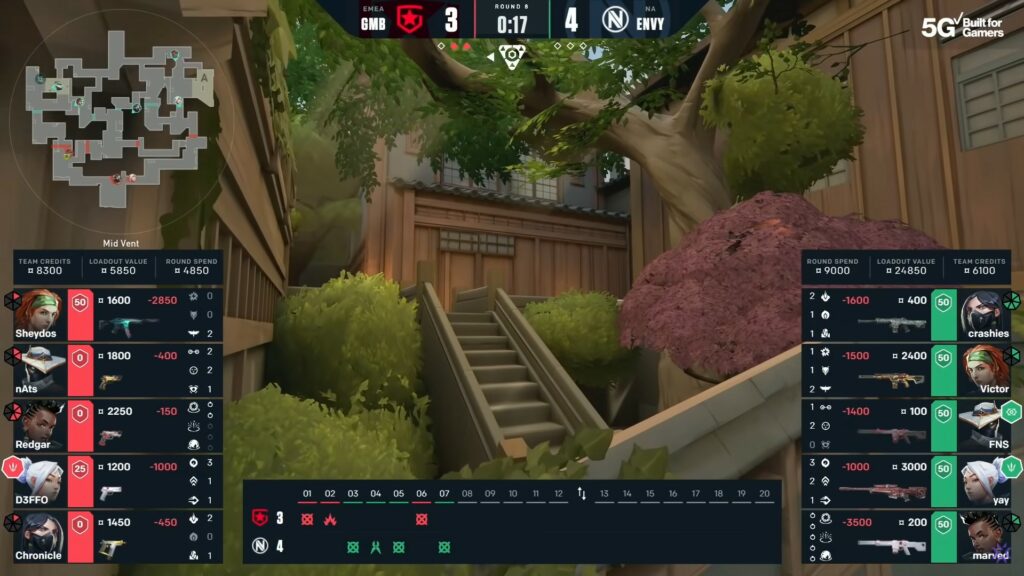
Credit: Riot Games
When someone calls for a save or an eco, this means that players make sure they have enough money to buy everything they need in the next round.
A full save round means you’re not buying anything in order conserve your money. If you have below 2,000 credits, you will need to call a full save so that you can full buy the next round.
Half buy

Credit: Riot Games
Half buying is similar to calling a save round. You want to have enough credits to purchase everything you need for the next round, only this time you’re spending excess credits to improve your chances of winning.
If you have above 3,000 credits, you can afford to spend some of it and still have enough for a full buy next round.
Buying a Sheriff, Judge, or Specter, and half armor will give you a better chance of killing an enemy agent and taking their gun or give it to a teammate.
Full buy
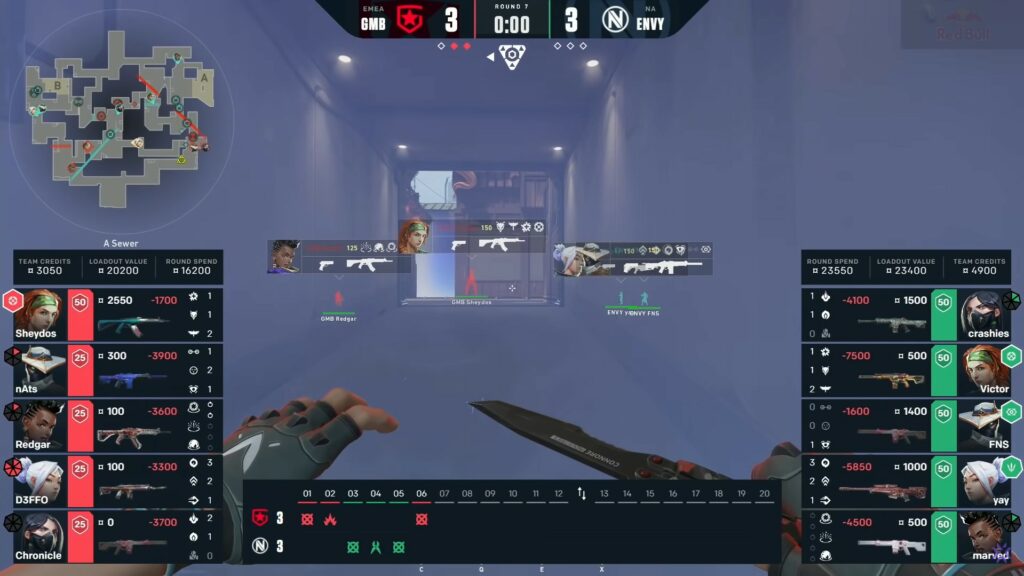
Credit: Riot Games
This is when you spend most of your credits to make sure you have everything you need to win the current round. Your full buy purchases typically include a rifle (either a Vandal or a Phantom), the entire agent utility kit, and full shields.
Force buy

Credit: Riot Games
This call is made to make sure the team spends whatever money they have left in an attempt to win the round and possibly turn the game around.
Force buying is risky, as the team will be inclined to save in the following round if they don’t win. This could also catch the enemy team off-guard since they won’t expect you to have that much firepower in the round.
Guide on ’round calls’
Bonus round
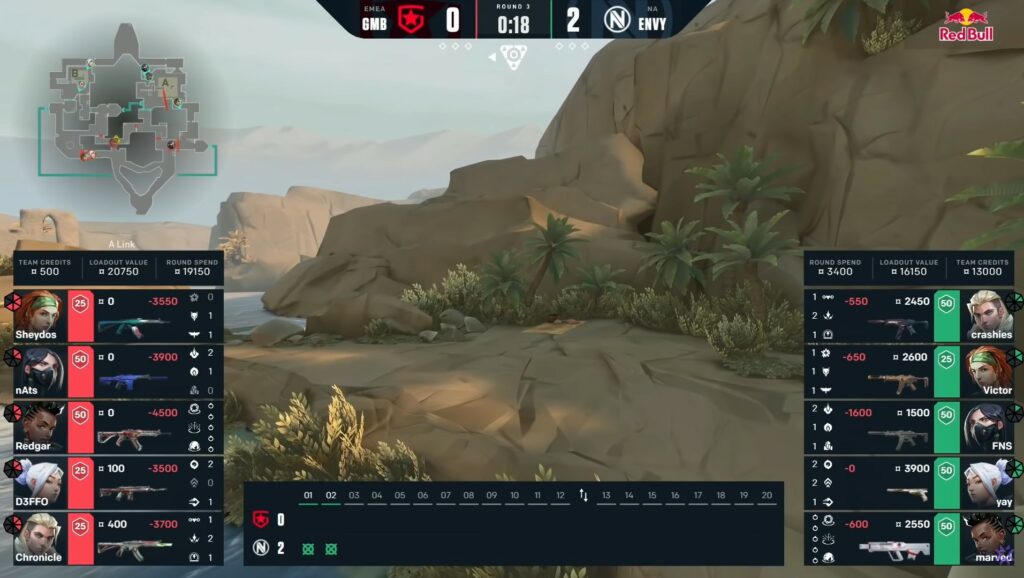
Credit: Riot Games
A bonus round is when players carry over the weapons they purchased after winning the pistol round. In Valorant, the team that wins a pistol round will have enough credits to purchase SMGs or even rifles in the following round.
If the enemy team decides to save after losing the pistol round, they will be able to full buy in the third round. The bonus round means players who still have SMGS or weaker rifles like the Bulldog or Guardian carries these weapons over to their opponents’ full buy round.
Guide on ‘in-game calls’
Rush
Valorant terms example: Gambit Esports goes for a rush against Envy
This is a strategy where all five players push the same spot or site in an attempt to overwhelm their opponents with numbers. When someone calls for a rush, both attackers and defenders need to be quick to react because the slightest pause could cost them the round.
Trade
Valorant terms example: Gambit Esports’ Ayaz “nAts” Akhmetshin gets a clutch trade against Envy
Trading, in Valorant terms and for other FPS titles, means killing the opponent that just killed your teammate. If a teammate is going in as an entry, always be prepared to aim at the opponents shooting at them to properly trade them out.
Rotate
Rotating is when players shift their attention from one location to another. For attackers, rotating means trying to take one spike-site, then going around and hitting the other. Defenders usually rotate one player at a time, unless the attackers are committing to a full rush.
Flank
Valorant terms example: Evil Geniuses’ Tarik “tarik” Celik flanks the enemy team
Flank plays require stealth and silence, or all-out speed. To execute a proper flank maneuver, players must commit to a push towards the enemy team. This will result in a pincer maneuver, with the enemy team defending their front and back points.
Sentinel agents like Killjoy and Cypher are the perfect anti-flank agents, because their stationary utility provide information on the enemy team’s whereabouts without putting yourself at risk.
Check out our Fracture map guide for a better understanding of the newest map to avoid flank plays, and how to determine your own rotation plays. All this information will help you make better calls.
Lurk
Valorant terms example: Gambit Esports’ nAts executes the perfect lurk play
Lurking is when a single agent from the attacking team goes to the opposite side of the map, waiting for an opportune moment to sneak around and shoot opponents from behind.
Lurkers move based on the information they gain. They sometimes even bait their team to get a better position on the map.
Save
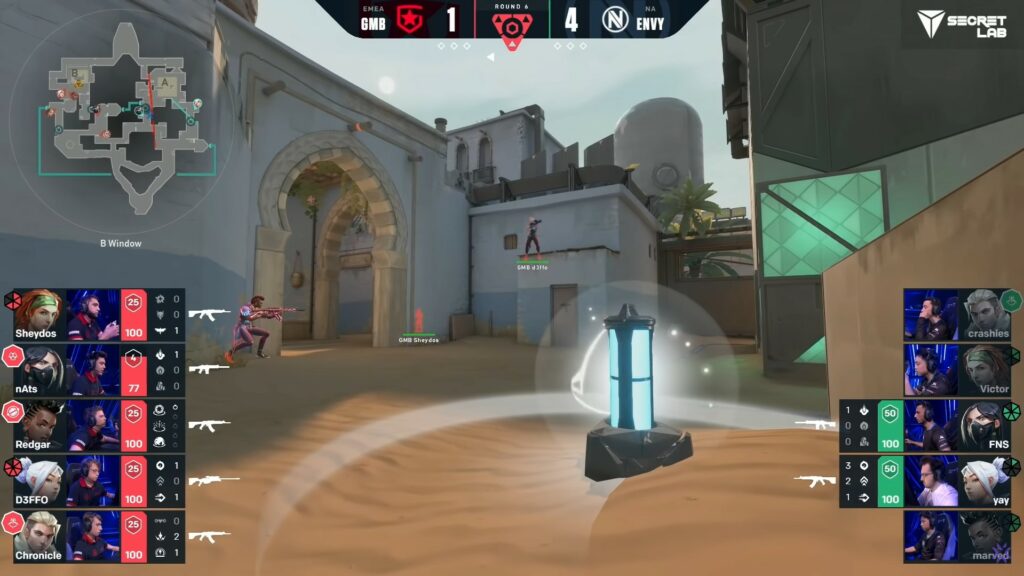
Credit: Riot Games
A save call means to save your weapon for the following round by avoiding the enemy team, letting the round timer expire, or letting the spike explode which ends the round.
This is a strategic choice, especially if you’re outnumbered 1v5 or 2v5. A save therefore gives you a better chance at winning the next round because you will have enough credits to buy full shields and utility as you won’t need to spend on your weapon.
Default
Valorant terms example: Gambit Esports playing default
Default is a round setup in which the attackers wait for the enemy team to make the first move, whether it’s by pushing or using their utility, where all five players will gather information before they decide on their next course of action.
Playing default will help in figuring out the locations of enemy agents which give you a better idea of where to push.
Riot Games’ competitive tactical shooter is one of the most complex games in esports today. It will take some time to grow accustomed to all the different Valorant terms, calls, and comms players use in Valorant. Be sure to check out more of our Valorant guides to improve your game.
READ MORE: Valorant Fracture map guide: Best strategies for attackers and defenders
